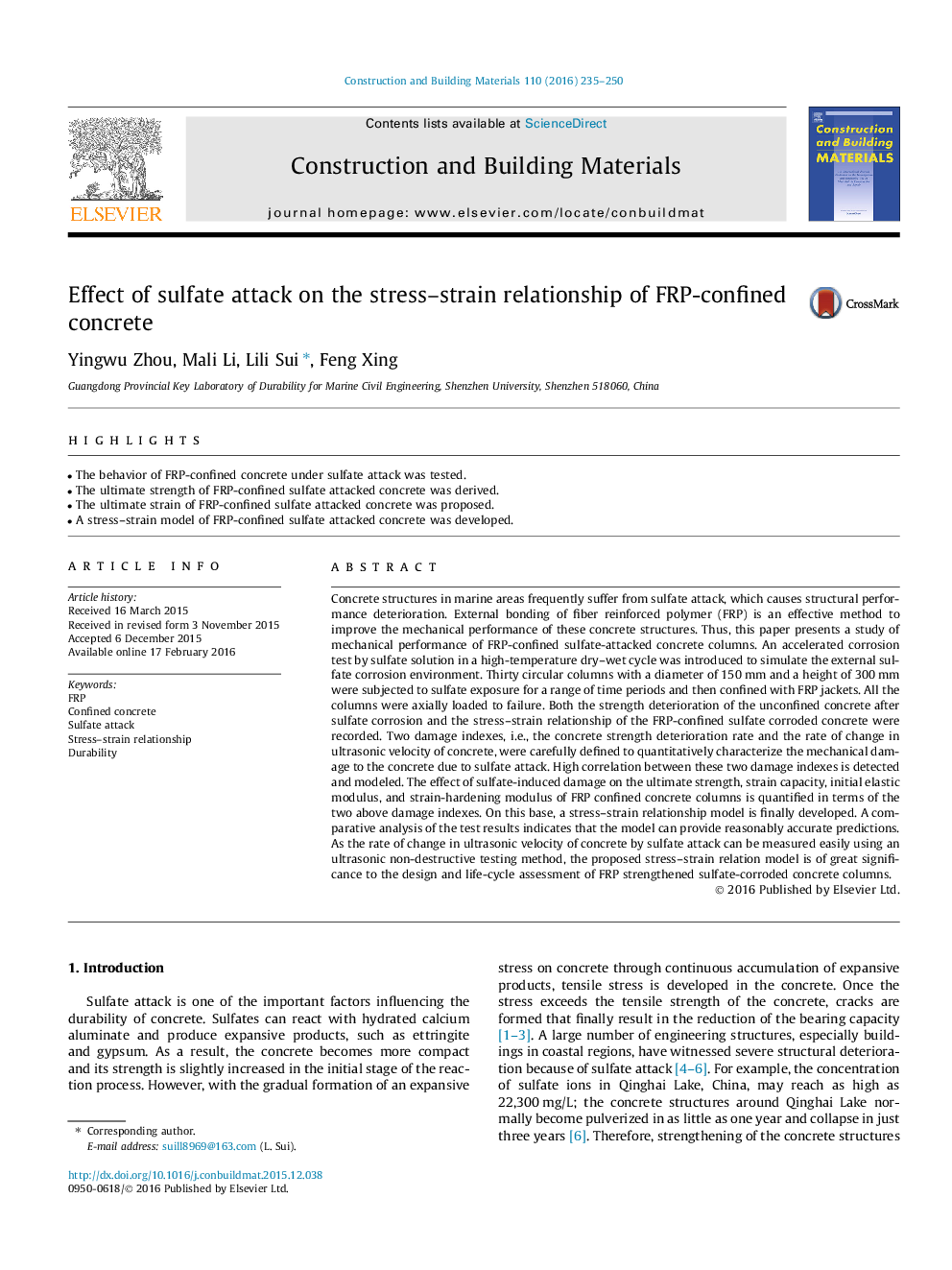| کد مقاله | کد نشریه | سال انتشار | مقاله انگلیسی | نسخه تمام متن |
|---|---|---|---|---|
| 256080 | 503540 | 2016 | 16 صفحه PDF | دانلود رایگان |

• The behavior of FRP-confined concrete under sulfate attack was tested.
• The ultimate strength of FRP-confined sulfate attacked concrete was derived.
• The ultimate strain of FRP-confined sulfate attacked concrete was proposed.
• A stress–strain model of FRP-confined sulfate attacked concrete was developed.
Concrete structures in marine areas frequently suffer from sulfate attack, which causes structural performance deterioration. External bonding of fiber reinforced polymer (FRP) is an effective method to improve the mechanical performance of these concrete structures. Thus, this paper presents a study of mechanical performance of FRP-confined sulfate-attacked concrete columns. An accelerated corrosion test by sulfate solution in a high-temperature dry–wet cycle was introduced to simulate the external sulfate corrosion environment. Thirty circular columns with a diameter of 150 mm and a height of 300 mm were subjected to sulfate exposure for a range of time periods and then confined with FRP jackets. All the columns were axially loaded to failure. Both the strength deterioration of the unconfined concrete after sulfate corrosion and the stress–strain relationship of the FRP-confined sulfate corroded concrete were recorded. Two damage indexes, i.e., the concrete strength deterioration rate and the rate of change in ultrasonic velocity of concrete, were carefully defined to quantitatively characterize the mechanical damage to the concrete due to sulfate attack. High correlation between these two damage indexes is detected and modeled. The effect of sulfate-induced damage on the ultimate strength, strain capacity, initial elastic modulus, and strain-hardening modulus of FRP confined concrete columns is quantified in terms of the two above damage indexes. On this base, a stress–strain relationship model is finally developed. A comparative analysis of the test results indicates that the model can provide reasonably accurate predictions. As the rate of change in ultrasonic velocity of concrete by sulfate attack can be measured easily using an ultrasonic non-destructive testing method, the proposed stress–strain relation model is of great significance to the design and life-cycle assessment of FRP strengthened sulfate-corroded concrete columns.
Journal: Construction and Building Materials - Volume 110, 1 May 2016, Pages 235–250